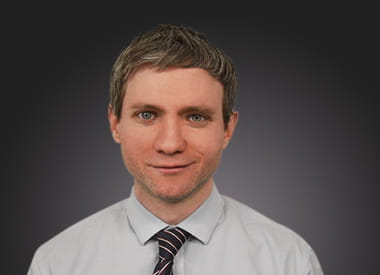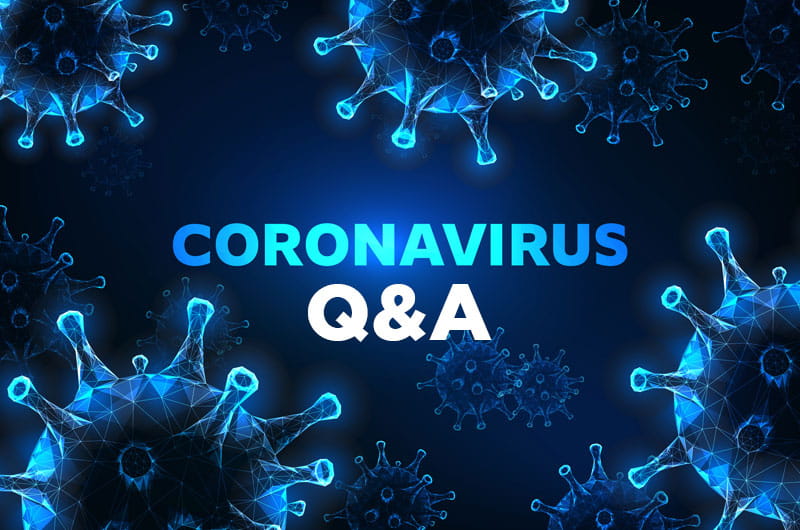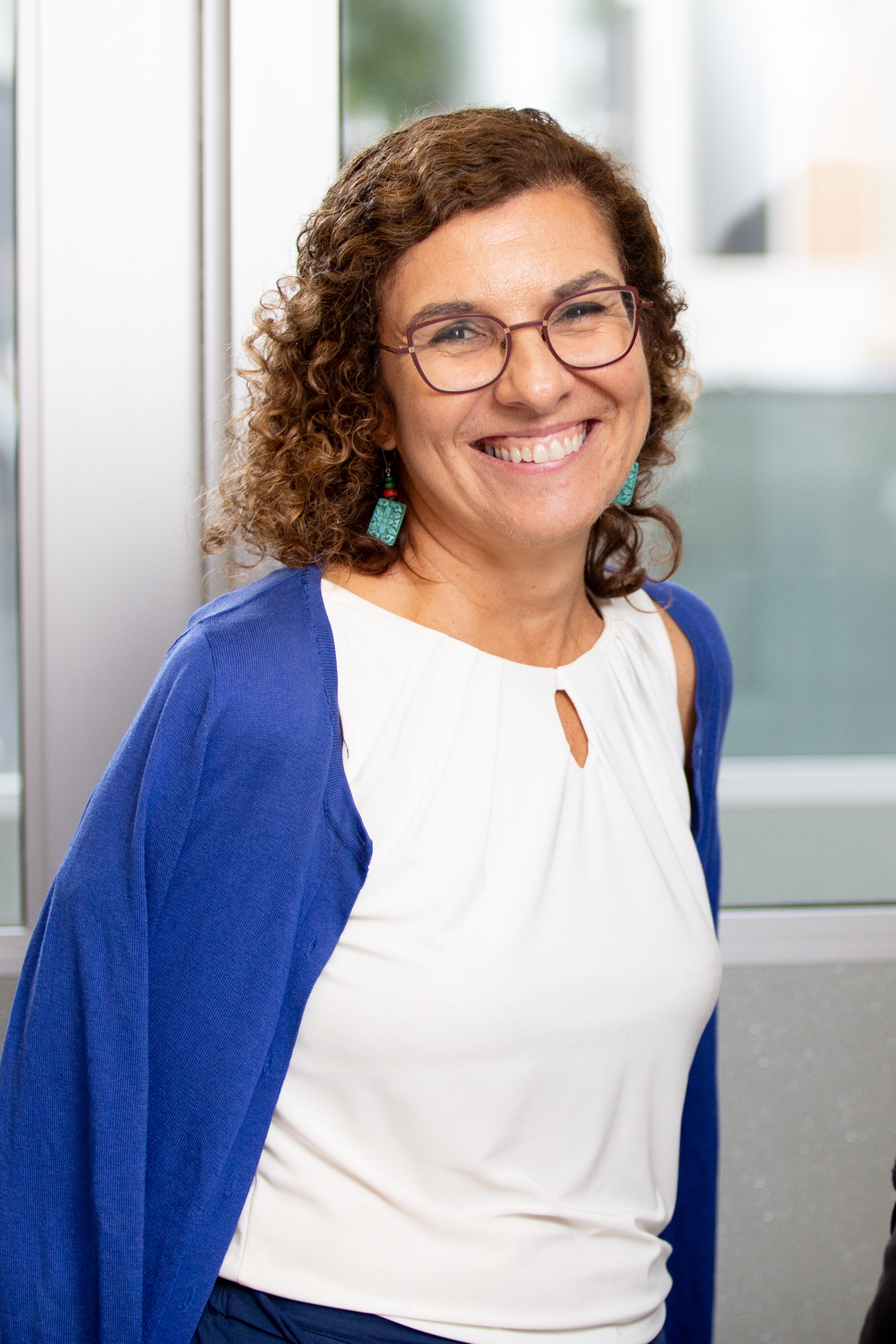COVID-19 Q&A With Dornsife School of Public Health Dean Ana V. Diez Roux, MD, PhD
 By Greg Richter
By Greg Richter

- On the Trail of Deepfakes, Drexel Researchers Identify ‘Fingerprints’ of AI-Generated Video
- New AI-Technology Estimates Brain Age Using Low-Cost EEG Device
- Bolstered by Research Consortium with Drexel, Jefferson’s Sidney Kimmel Cancer Center Earns NCI Comprehensive Cancer Center Designation
- No link between acetaminophen use during pregnancy and children's autism risk

Please visit the ‘Drexel’s Response to Coronavirus’ website for the latest information on campus preparations and responses regarding COVID-19.
As details emerge about how fast the novel coronavirus, known as COVID-19, spreads, misinformation and fear can spread very quickly also. Fortunately, Ana V. Diez Roux, MD, PhD, dean of the Dornsife School of Public Health is here to help sort out fact from fiction and share what experts know so far.
A renowned authoritative voice on social determinants of health, population health, and other aspects of epidemiology both locally and internationally, Diez Roux’s seminal research contributions have shaped the field of public health and policies affecting urban life.
In addition to establishing Dornsife School of Public Health’s Urban Health Collaborative and its efforts to make cities healthier and more equitable, Diez Roux is the lead investigator on the Salud Urbana en America Latina (SALURBAL) Project, which studies Latin and South American cities to determine how they affect the health of their residents.
Q: Despite early research gains, it seems like public health officials understand relatively little about COVID-19. How concerned should we be?
A: This virus is of great public health concern because it is a new virus for which people have no immunity, appears to spread easily from person to person and causes severe disease in a small, but significant, proportion of those infected, especially in older people and others with underlying diseases. If the virus spreads rapidly to many people, even if the proportion of severe cases is low, the result will be a very large number of severe cases needing hospitalization and even a large number of deaths. This is what worries public health experts.
Scientists are still learning about how the virus is transmitted, what proportion of the population may be infected but not have symptoms and what proportion of infected persons have severe disease. But a few facts are emerging. Knowledge on these things is rapidly evolving so our understanding will change over time.
We know that the virus is transmitted through close personal contact (usually between people who are within 6 feet of each other), primarily through droplets emitted by symptomatic people when they cough or sneeze. Although some reports have suggested spread through aerosols — much smaller particles that can remain in the air for longer periods and travel over much longer distances than droplets — we are not sure yet how important this is, but at this time it does not appear to be the main mode of transmission.
Q: If I’m feeling well, do I really need to keep my distance from other people who are feeling well?
A: The more symptomatic the infected person is, the more likely they are to transmit the disease to others. This is why there has been so much emphasis on staying away from others if you are sick. And this is still the most important recommendation. However, there have been some reports of what appears to be transmission before symptoms develop. We need a lot more data to understand how important or frequent this type of transmission is. Given the possibility of asymptomatic transmission it is a good idea for social distancing measures to apply to everyone for now.
It has also been suggested that the virus can remain for some time on contaminated surfaces or objects, so that a person could contract the infection if they touched that surface and then touched their nose or mouth. At this time it is not clear how important this route of transmission is in the real world. But, out of an abundance of caution, health authorities have recommended cleaning high-touch surfaces frequently.
Of course, if the virus is transmitted through aerosols, remains on contaminated surfaces and is transmitted even by people who may not know they have the disease (because they are asymptomatic), it will spread much more rapidly through a population. Uncertainty about these things, as well as uncertainty about the case fatality rate, is at the core of divergent predictions about the potential future impact of the virus.

Q: How are public health experts measuring how fast this is spreading and how deadly COVID-19 is relative to the flu?
A: The speed of transmission from person to person is quantified through something called the reproductive rate. The reproductive rate of this virus appears to be about 2-3, which means that each infected person transmits to an average of 2-3 people. This is lower than measles (reproductive rate 12-18) but higher than seasonal flu (reproductive rate about 1.3). The 1918 flu had a reproductive rate of about 2.
Aside from the speed of transmission, another major driver of the public health impact is the severity of the disease caused by the virus. The majority of cases (probably about 80%) are mild. Estimates of case fatality rate vary because of important limitations in the data we have but most are around 2% or 3%, meaning that two or three persons out of 100 who have the disease die. But it is very possible that this rate is actually lower when we include infected persons who have few symptoms.
Based on what we know so far, the case fatality rate of COVID-19 seems to be significantly higher than the seasonal flu (about 0.1 %) but likely lower than the 1918-19 influenza pandemic (perhaps as high as 10% although estimates are debated). It is also lower than the case fatality rate for SARS (10%). However, the disease is significantly more severe in older people and people with underlying health problems. It has been estimated that the case fatality rate may be as high as 15% in people over 80 years of age.
An important caveat is that the reproductive rate and the case fatality rate are driven by the number of cases identified. The number of cases can be grossly underestimated if a lot of cases have very mild symptoms or are asymptomatic. This could result in an underestimate of the reproductive rate and an overestimate of the case fatality rate. The absence of significant testing for coronavirus in a systematic way makes it difficult for us to know for sure how many cases are being missed.
As you can see, there are a number of uncertainties, this is why there continue to be discussions about the best strategy to contain the impact of the virus. An additional complication is that it is important for us to think both short-term and long-term. As shown by the influenza pandemic of 1918-19, it is possible that this virus will be with us for quite a while and possibly reemerge in a second wave next fall/winter. It may also affect different regions of the world at different times, perhaps moving more to the southern hemisphere during their winter (our summer). There are many factors to consider and still many uncertainties, some of which will be resolved as we learn more about the virus and test more people in systematic ways.
Q: Seeing travel bans and other methods of locking down Milan, Wuhan and other cities, are these strategies effective at stemming the spread of the virus? Is the business and quality of life price worth it?
A: This is the million-dollar question.
Given the way this virus seems to be transmitted (primarily through close personal contact) the first and primary strategy is to identify cases and isolate them so that they do not spread the illness to others. And then to identify contacts of these cases and isolate and monitor them for a prudent period (in this case, 14 days). This case identification and contact tracing approach is the tried and true public health approach and is what our city health department, in collaboration with health providers across the region, continue to focus on.
At some point however, if transmission is occurring rapidly in the community, and especially if it is occurring from people who have little or no symptoms_— and therefore have not been isolated — “social distancing” approaches (i.e. reducing contacts between persons) can help slow the spread, giving time for health care providers to adapt and for treatments and vaccines to be developed.
Importantly, social distancing can “flatten” the epidemic curve, reducing the burden of cases that need to be dealt with at a particular point in time by the health care system. However, social distancing can be very disruptive and have unintended consequences that may also be bad for health (i.e. isolation, economic consequences, etc.) so it needs to be decided on thoughtfully and based on the evidence.
Mathematical modeling can be used to estimate the utility and tradeoffs of different strategies, like social isolation, and models applied to COVID-19 are actively being worked on. You may have seen reports on estimates derived from these models in the press. It’s important to remember that these models are based on assumptions and inputs, like the reproductive rate and the case fatality, around which there is still quite a bit of uncertainty.
However, we often need to act in the absence of complete knowledge. And sometimes we have to prioritize protecting the most vulnerable, even if this means inconveniencing those at low risk.
This is the challenge we face: use our best judgement based on the best available evidence to protect the most vulnerable from the effects of the virus while avoiding any unintended consequences of our actions. It can be challenging to find this balance but it is what we as a society need to do.
Q: Recently, rare instances of xenophobic attacks have occurred in Philadelphia with attackers citing the outbreak. Can you speak to this fear and how its impacts are not equal for everyone?
A: These are difficult times for everyone because there is much that we do not completely know about the virus and what impact it may have. In situations like these, fear and panic can take hold. In these contexts, the epidemic of fear can be as bad as the viral epidemic itself. There have already been instances of stigmatization and xenophobic attacks resulting from ignorance and bias.
Like all diseases, COVID-19 will no doubt show inequitable effects across social groups based on resources and power. We are already seeing how the pandemic — not just the viral infection but also other consequences of the pandemic — is affecting people differently depending on their resources and social standing. Some of us have access to quality health care, but others do not. Some of us have paid sick leave, but others do not. Some of us get paid even if our employer closes down for a couple of weeks, but others do not. Some of us have other health conditions that make us more vulnerable, but others do not. Some of us can easily work from home, but others cannot.
We will also see large inequities in how the virus affects different countries especially as we start to see the epidemic spread to the southern hemisphere, which we have not seen in a very significant way yet.
The pandemic — both viral and of fear — will magnify and make even more obvious the large inequities that exist in our society and have major implications for health. It will create major challenges for health care and many other social services across the world. Reducing the impact of the pandemic, and our responses to it, on the socially and economically disadvantaged will be a major challenge.
Q: All this “unknown” sounds concerning. This is where you, the public health expert, give us some comfort, right?
A: The most important thing we can do is be aware of the facts and act in accordance to what we know to be the best public health approach. We must do our best to stay calm and operate based on evidence and not fear. This can be hard because it is easy to get drawn into the panic and contagious diseases are scary. It is also challenging because there is a lot that we still do not know, so it is still hard to reliably predict the timing or magnitude of the impact that COVID-19 will have.
As public health experts, we have a responsibility to be the voice of reason, communicate the facts clearly, and use our best judgement based on the best available evidence to protect the most vulnerable from the effects of the virus while avoiding any unintended consequences of our actions. There will be tradeoffs involved and these are the things that we need to make clear so that as a society we can make the best decisions in the face of this major public health challenge.
In This Article
Contact
Drexel News is produced by
University Marketing and Communications.